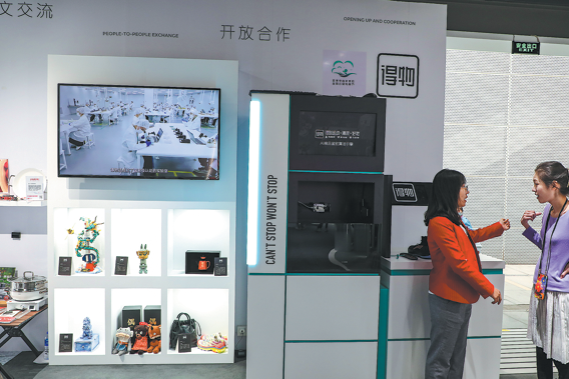China adapting to new phase of consumption growth


The Chinese consumer market, despite recent challenges, stands as a beacon of enormous potential. While current economic indicators, such as a plateau in consumer sentiment and single-digit growth in retail sales, might suggest a tempering of expectations, the underlying dynamics of the market signal a future ripe with opportunity.
The recent downturn in consumer spending and the end of double-digit growth in China's retail sector, evidenced by a modest 3 percent increase in third-quarter retail sales and a mere 2 percent rise in the "Double 11" shopping festival sales, reflect a market in transition rather than in decline. This perspective is crucial for understanding the broader context of China's economic trajectory and consumer behavior.
First, it is important to acknowledge the resilience and adaptability of the Chinese consumer market. Despite the slowing growth, the market still achieved a staggering 1.1 trillion yuan ($153.6 billion) in gross merchandise volume during the "Double 11" festival, surpassing the annual consumption of some entire economies. This feat is not only a testament to the market's size, but also its potential to sustain and grow further.
Looking ahead, McKinsey's analysis projects a 5 percent increase in retail sales yearly, which, in a market as vast as China's, translates to an additional 10 trillion yuan in retail sales in the next five years. This figure is not just a number, but a reflection of the immense growth potential that still exists within the Chinese consumer space.
The underlying drivers of this optimism are manifold. One significant factor is the continued growth of upper-middle and high-income households, projected to reach 200 million by 2025 and 260 million by 2030. The expansion of high-income cities is expected to increase from 82 in 2025 to 93 by 2030. This rise in affluent consumers will undoubtedly fuel consumption across various sectors, from luxury goods to high-end services, reshaping the market dynamics and creating new opportunities for businesses.
Moreover, the trend toward a more service-oriented economy is already underway. The services sector, particularly in travel and entertainment, has shown robust growth, with the food service sector alone growing by 19 percent year-on-year. This shift from product to service consumption is crucial as it reflects changing consumer preferences and the evolving nature of economic growth in China.
Equally noteworthy is the performance of consumer companies in this changing landscape. McKinsey's analysis of 80 leading consumer companies in China reveals a nuanced picture: While overall growth trends toward low single digits, substantial differences exist among these companies. Notably, one-quarter of these companies have experienced double-digit growth so far this year, showcasing the potential for success even in a challenging environment.
This divergence in performance underscores the importance of innovation, premium branding, and agile responses to market changes — factors that will continue to define winners in the market.
The digital and e-commerce landscape in China also offers a glimpse into the future of consumer markets globally. The surge in livestreaming sales, which now account for a significant portion of total e-commerce revenue, demonstrates the innovative ways in which Chinese companies are engaging with consumers. These trends are not just about technology, but about how brands connect with and understand their customers, suggesting a more interactive and personalized future for retail.
The cautious yet optimistic outlook for the Chinese consumer market is not unfounded. While there are challenges, such as low consumer sentiment and a slower recovery, the long-term prospects remain robust. Continued urbanization, rising income levels and a shift toward more sustainable consumption patterns are expected to drive growth in the medium to long term.
In conclusion, while the era of double-digit growth in China's retail sector may be over, the market is far from stagnant. The transition toward a more balanced, service-oriented and digitally savvy economy opens up new avenues for growth. The Chinese consumer market continues to hold tremendous promise, and its evolution will likely set trends for global consumer markets. Businesses and investors would do well to look beyond short-term fluctuations and recognize the enduring potential of this dynamic market.
The views do not necessarily reflect those of China Daily.
The writer is a senior partner in McKinsey & Co's Shenzhen office and leader of the firm's Asia consumer and retail practice.




































